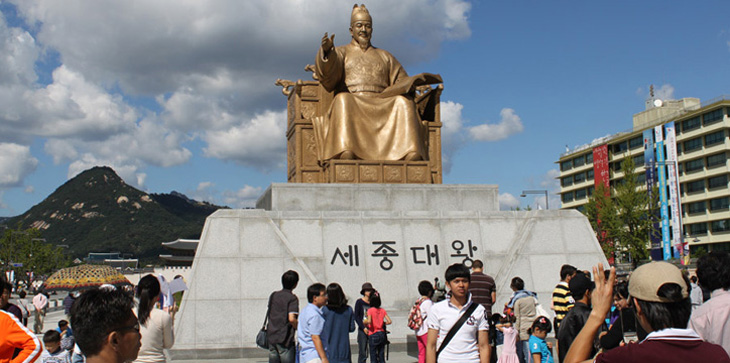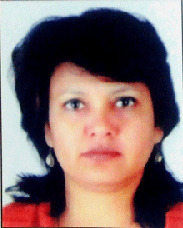 Seoul:
Seoul: If its only Psy’s 'Gangam Style' that makes you think of Korea, you are mistaken. Though the K Pop culture set the young population grooving feverishly on the streets and in discos across the globe snatching Gunniess World Record for the most liked YouTube video, Korea has a lot more to its credit that puts it in the category of world leaders.
Technologically advanced to the hilt, Korea’s story of resurgence and development is unparalled in the world.
South Korea, a nation that rose like the mythical phoenix after 1945 surprisingly shares a similar history with India. Feudalistic society, foreign invasions, a country raised totally and abysmally 60 years back is now an example of the most modern, industrially advanced countries of the world. The entire Korean peninsula one fifteenth the size of India, almost the size of United Kingdom, with sheer grit, nationalism and the will to become a developed country its people planned and worked hard to bring their nation to a point of becoming a country that can showcase itself to the world at par with the most developed countries on this globe. With a rich culture and history behind them South Korea is an exemplary mix of modernity and traditional ethics. The food, the mannerisms, the language and culture has kept their originality alive and kicking.
Words go amiss as I describe the city of Seoul. Colourfully lit up market places, glassy vertiginous skyscrapers, glitzy malls, amusements parks, I had heard a lot about South Korea. My journey from Incheon international airport, a newly built structure covering miles, to Seoul city was something of a dream come true.
‘Anneyeong Haseyo,’ meaning ‘Halo’, I was greeted by my guide Viven, a beautiful Korean girl as she and her friend Su received me at the Incheon airport. I sensed the warmth in the air and felt assured of a comfortable stay for the next few days that I would be spending in Seoul, the capital. It took us about an hour to reach our destination 'Shilla Stay', an upend property in the heart of the capital, cruising by the most luxurious of coaches that criss cross the city. Meticulously clean and smooth roads laced with brown leafless trees as it was winter in early March seemed warmly welcoming in their unique grandeur. Landscaped beauty of the symmetrical withered trees as if come out straight from some Hollywood flick. We crossed the big Hangang river, on a kilometre and a half long bridge. 'Gamsa Hamnida', (Thank you in Korean) I said as they departed for the day leaving me at the hotel to be with me next morning.
South Korea is a country that is glass and granite. Capitalist economy, consumerism speaks aloud. Korea is synonyumous to Samsung, LG and Hyundai. How we take pride in flaunting a latest version of a Samsung or LG mobile phone. Their TVs and range of home appliances can be spotted in every home in India. Every second home has a Hyundai brand of car. POSCO is Korea’s steel major that is making inroads into India. In 2018 Korea is going to host a sporting extravaganza, the Olympic and Paralympic Winter Games.
Korean currency ‘won’ is 1170 a dollar (rates keep changing) and driving is right.
Cosmetic industry of this far eastern state is a million dollar turnaround. Every woman’s dream to look beautiful needs a Korea makeover. The upscale market of Insadong and Dongdaemun among others are flooded with all types of skin treatment and glow enhancing creams, packs, masks, lotions and what not. No wonder Korean girls look like dolls, the phrase ‘dolled up’ seems to come straight from here. The glass like skins tell all. Cosmetic is a big industry here and Korean products are hugely coveted and used the world over.
Koreans have a lot to be the first ones in the world. They proudly boost of reviving the Cheongechon river, quite akin to Delhi’s Yamuna, a unique project to make a dead river come alive, then hosting the 2002 Korea Japan FIFA World Cup Soccer Game and a one of its kind, a Landfill resource project.
Though their major success stories are those of their resurgence from a totally destroyed state in 1910 and a Japanese rule till 1945 to a one that is a most modern society, and now still living under the shadow of constant threats from neighbour North Korea (striking similarity with India), the country has the most heavily militarised and volatile borders in the world.
Hangong river, a river that was once dead with slums around it and filled with dirt and garbage is now a clean stream flowing through the city of Seoul with designed bulvards on both side and walking ramps. Way back in 1988 when Seoul hosted the Olympic games the river sides were made as paths for atheletes and visitors for practise sessions. Cheonggyecheon, now a thriving landscaped stream is a great tourist attraction. Its called the
Cheonggyecheon Restoration Project. There’s a whole museum dedicated to it.
Something that makes you sit back and watch is the
World Cup Park which is also called the Sky Park. It is an artificially created land to make a landfill stable rather than letting it be a ecological disaster. We would call it a landfill site. Can you think of a landfill park as a stadium of National Sports venue! Koreans have done it. A whole landfill site was conceptualised as their FIFA World Cup venue and with precision planning and hard work made it a showcase of Korean development to the world.
As South Korea has capitalist economy business houses contribute towards the upkeep and building up of city infrastructure, business centres, commercial centres along with entertainment parks for people.
Lotte Amusement park just took off my breath. It made me wish my childhood back. It would give the Disney world a run for its money. You call it is an amusement park or an Urban Theme Park, it is composed of Asia’s biggest indoor theme park and outdoor park magic island. Merry go rounds, hot air balloon rides, mask pageant, animated fairy tales, joy rides and other endless entertainment. Lotte World Park has Asia’s largest Ice Rink for ice skaters.
A Buddhist monastery called
Jinkwasa monastery was a one time experience. It is unique as it is a monastery run by women monks. Visited by world leaders in look out for peace and tranquillity it teaches you meditation practised by Buddhists as a way of life. It follows the Jogye order of Korean Buddhism.
Not to miss the
Korean food with its myriad flavours. Its a healthy blend of taste and tradition. Its not just the noodle country, the cuisine springs surprise made of rice, fresh vegetables soaked in sauces and vinager. Kimchi, Bulgogi, Makgeolli are the most common dishes that accompany your lunches and dinner, more akin to our Indian ‘acchar’. Koreans street food is something that is to be experienced.
Something that came across very unique about their society as I talked to Viven, my guide, was about their faith. In Korean society other than the four religious beliefs of Christianity, Buddhism, Confucianism, the fourth category gives you the liberty of 'no religion'. A lot of Koreans follow no religion. Cheondogyo is a homegrown religion.
Interestingly there is an ages old
Korea India connection too. Historically, around 2000 years ago, Indian princess, Suriratna from Ayodhya travelled to South Korea and married a Korean King Kim Suro. Suriratna known as Queen Huh from the Gaya dynasty, travelled for three months by sea, following a divine signal by her father, to marry the founder of Karak kingdom.At present, six million Koreans with surnames Kim and Huh from Gimhae, and Lee from Incheon, trace their ancestry back to the royal Indo-Korean couple.
Talk to a Koreans and they believe that their tomorrow is into today. Their vision and will to make a star of their nation has really made their today an image of tomorrow.
- Writer is Editor-in-Chief of facenfacts.com, was part of IWPC delegation to Seoul, South Korea on invite by Korean Cultural Centre.
 Seoul: If its only Psy’s 'Gangam Style' that makes you think of Korea, you are mistaken. Though the K Pop culture set the young population grooving feverishly on the streets and in discos across the globe snatching Gunniess World Record for the most liked YouTube video, Korea has a lot more to its credit that puts it in the category of world leaders.
Seoul: If its only Psy’s 'Gangam Style' that makes you think of Korea, you are mistaken. Though the K Pop culture set the young population grooving feverishly on the streets and in discos across the globe snatching Gunniess World Record for the most liked YouTube video, Korea has a lot more to its credit that puts it in the category of world leaders. 